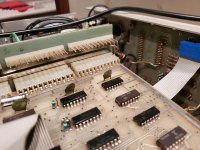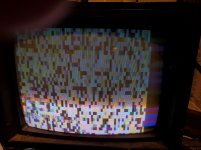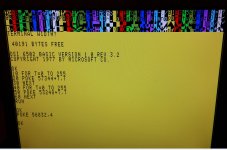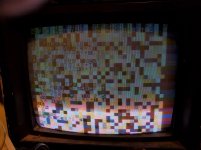Got it!!
So basically I followed the trace from U4G pin 13. It's hard to explain, but essentially if you think of three vias arranged as points of a triangle, the trace coming from pin 13 attaches to the bottom left point, and then the trace runs under on the other side to the bottom right point, coming back up and running a short distance under U4H before going under again through another via, and a straight shot to pin 3 of J4I (the keyboard connector).
On close inspection, I realized the metal cap that runs over all three 'points' of the triangle was really close, maybe even touching. I also found what appeared to be corrosion or maybe old solder flux (the previous owner didn't do a great cleaning job on that). Anyway, it appeared to have 'metastasized' to the point that it may have been making contact with either the metal body of the cap, or the top point of the triangle (which is not supposed to be connected to the other two points), or both. Anyway, I moved the cap as much as I could upwards, scraped away the residue, and immediately I had everything working properly!
Dave you were invaluable as always. I think I was mostly on the trail... I just wasn't confident that KD2 necessarily had to be having some kind of activity on it.
Anyway, now I'm going to try, without breaking anything else, to put it all back together and play with it a bit. I'm curious to see an OSI with colour!
And then I can pack this away for a bit while I await the tapes, and try to get this adapter for the Microkit finished so we can see what the rest of the 1702 data is.




